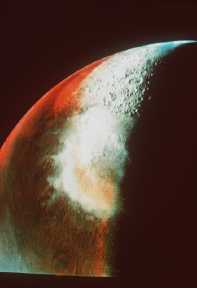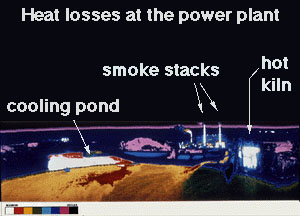Mars Climate, Now and In the Past
The Cooling of Mars
Many of the reasons the history of Mars is different from that of the Earth stem from the small size of Mars. Mars is about 1/3 the size of the Earth. This means that it was able to cool much more rapidly over time than did the Earth.
When Mars formed about 4 Billion Years ago, it may have been left relatively colder than the other terrestrial planets. Further cooling inward from the surface of Mars froze the water, preventing the formation of special hydrated-minerals which allow for movement of the lithosphere. Without the ability to subduct and remelt, the Martian lithosphere slowly thickened to the point of being immovable, like hardening candy.
Later there was a period of warming and volcanism, caused by a warm plume of material rising from the deep interior of Mars, which pushed out and raised the crust, and created the Tharsis Bulge, Olympus Mons, and the other volcanoes. This volcanism influenced the subsequent Martian climate.












